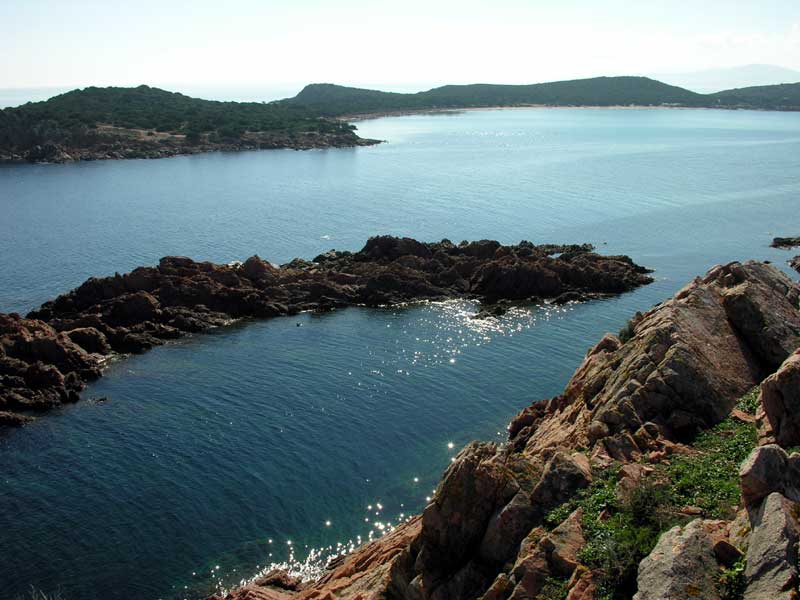Area Marina Protetta Tavolara
Punta Coda Cavallo
www.amptavolara.itGallura
Itinerary no. 1
- Trail Conditions: Car
- Interest: Archeology, Hystory
An itinerary leading from the coast to the inland of Gallura where the distance from the sea has maintained almost intact the nature and life of the inhabitants. The landscape is scattered with "stazzi" and grey granite rocks with holes in them caused by wind and rain erosion, and enriched by the presence of archaeological complexes and historical evidences.
Olbia
Lying on a stretch of plain surrounded by hills, Olbia strikes for its beauty: towards the south the silhouette of Tavolara Island, in the middle the homonymous gulf (with the characteristic mussel farming), and the harbor station of lsola Bianca characterize the landscape. However, Olbia is not only the main junction of the connections with the Continent: it is also a beautiful art town with several evidences of its long history.
Worth to see: San Simplicio Basilica, in Romanesque-Pisano style, built between the 11th and 12th century with granite blocks from Gallura; San Pietro e Paolo Church with decorative granite ashlars; the Town Hall, Liberty; corso Umberto where the architrave are characterized by 18th century epigraphs; the rests of the Roman Aqueduct; the Punic walls.
Telti
It lies on the slopes of Mt. Limbara and has been an autonomous Municipality since 1963. Its origins date back to the end of the 19th century, when groups of shepherds began to gather around the small country churches of Sant'Antolia and Santa Vittoria. In Telti, the last week of August, the Myrtle Festival is held: besides the typical liquor from Sardinia, it aims at promoting the products of the local agricultural/breeding and craftsmanship tradition, from cheese to granite and wrought iron handicrafts. The territory is dominated by Mt. Pinu (742m), covered by a Maritime Pines wood and partly by a thick Mediterranean maquis.
Calangianus
The rich town of Gallura lies in a territory which has been inhabited since prehistory, as witnessed by some significant pre-nuraghic finds. Presently, Calangianus contributes for about 90% to the national production of cork and since 1978 an important International Cork Fair has been held. Santa Maria degli Angeli Church (1378) is worth a visit: it has a beautiful 18th century choir, a wooden tabernacle, and some 19th century paintings.
Sant'Antonio di Gallura
The town was part of the Municipality of Calangianus until 1979; today it consists of a group of white houses situated near Liscia Lake (at 2 km), an artificial basin used for the irrigation of the agricultural areas of Arzachena and Olbia and for the water consumption of Costa Smeralda and the many towns in Gallura.
Near the shores of the lake, which submerges San Nicola di Carana Church during the flood days, there is a giant wild olive (at least ten persons must be holding hands to encircle it): according to researchers, it is one of the oldest trees in Europe.
Arzachena
An agricultural town transformed by the tourist and economic boom, Arzachena is worth a visit for the archaeological monuments scattered throughout the countryside. The Grave of Gigante in Coddhu 'Ecchiu is one of the best preserved graves in the whole Sardinia. Also the Neolithic necropolis of Li Muri is very interesting, with its circle graves typical of the Culture of Arzachena. At the north-eastern edges of the town, on a hill called Monte dell'lncappiddatu ("of the hat"), a big granite boulder stands out: erosion gradually shaped it into a big mushroom.
The site is rich in materials which can be dated back to various epochs, from the Recent Neolithic period (3,500-2,700 BC) onwards, and in the surrounding area the rests of a nuraghic village have been found.







